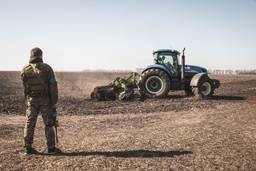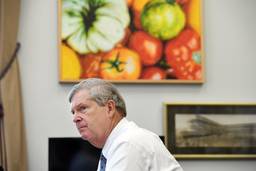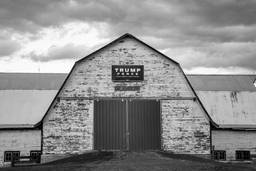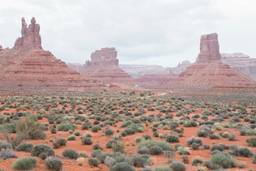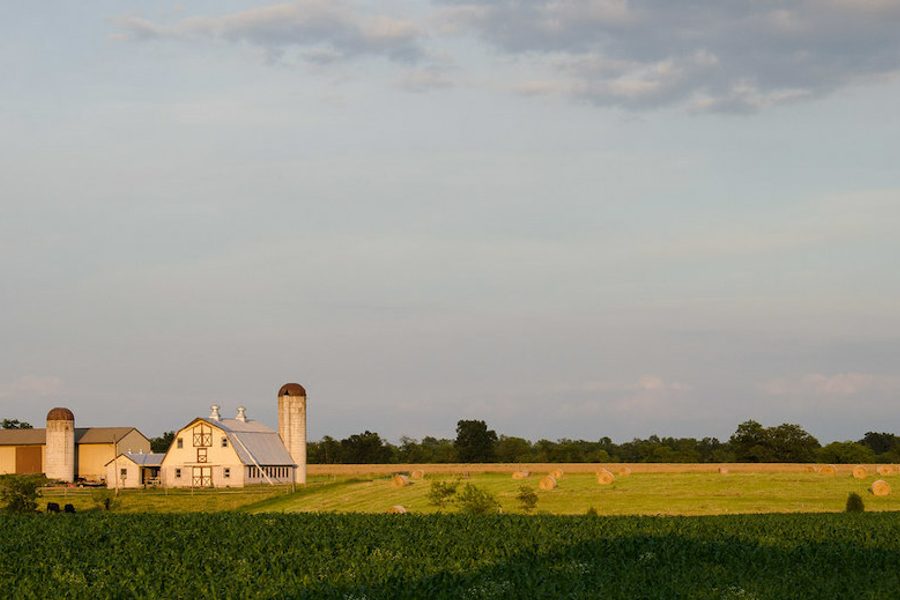
JFK, as it turns out, was wrong when he noted 60 years ago that the word “crisis” is a combination of the Chinese brush strokes meaning danger and opportunity. While he was linguistically incorrect, we get what he was saying. A crisis situation can be the impetus for change, an opportunity for society to figure out better ways to move forward.
Today, the largest crisis in the minds of farmers is the overarching threat of an increasingly variable and changing climate. With the added pressures of stark economic inequality and the increased cost of living—up 14% over the last 4 years — the economy is decidedly not “ the greatest economy in the history of our country.”
Most any farmer or rancher would nod in the affirmative if asked whether this is a clear and growing crisis in agriculture. They see unprecedented adverse weather as undeniable evidence of a changing climate, which is a contributing factor to the current farm crisis. While this is tnot a universally accepted idea among farmers, none can deny, however, that prices are historically unfair with 2019 farm income predicted to be below the average.
Farmers and ranchers know the weather, in the past year at least, has been awful, and while many are unwilling to admit that we are dealing with a changing climate, not just bad weather, most are looking for answers. They are looking for ways to survive in a changing agricultural environment — no matter what its cause, wondering what those solutions to the current system might look like.
In all my 40 years of farming, farmers have been told we need to work harder, get bigger and embrace all the new technology. Whether that means moving ever larger numbers of livestock into confinement, using genetically modified seed and its complement of pesticides and fertilizers, or buying machinery sometimes costing more than the value of my farm — no matter, buying the technology is our only option. In the end we are supposed to be thankful we can be a part of the global marketplace, even if it is controlled by multinational corporations and investment banks that determine the cost of everything we buy and the price of everything we sell.
So, what might a different system look like? Could we have a system that allowed farmers of any size to be profitable? A system that satisfied the farmer’s need for fair prices and a dignified life? A system that produced quality food as determined by a partnership between those who grow food and those who eat it? A system where everyone could afford good food, produced in a manner that might actually benefit the environment?
Could we establish a framework that depended less on global markets, more on local production and healthy diets rather than continuing the trend of going all in a “western diet” and pressuring the rest of the world to follow? Certainly, the medical community and the environmental community would support these changes, but agribusiness and farmers, perhaps not so much.
Clearly those controlling the current food system are opposed to any changes that would cut their profits by a shift away from processed foods, grain fed animal products, large scale intensive crop mono-cultures and a global food chain or a shift to any sort of low input sustainable agriculture. Although family farms account for 97 percent of farms in the United States, the largest 10 percent of farms produce 75 percent of the country’s agricultural output, meaning large-scale operations have an overpowering influence on farming policy. Those entities that profit from the current destructive and fragile food system use their lobbying efforts and campaign funding to maintain their existence. One wonders if those in positions of political power dismiss the Green New Deal as a platform for change because they really believe it is unnecessary, that it is truly untenable, or, because they are unconcerned about environmental disaster, opposed to an economy that works for everyone, or are just unwilling to kill their golden goose.
Farmers are lured onto the bandwagon of a global food supply with the mantra that “we need to feed the world,” despite the fact that the world would rather, and could, feed itself. Supposedly, producing more at a lower price and expanding export markets is the answer to our low farm prices. This will be achieved only by breaking down trade barriers and, in effect, forcing importing countries to eat what we sell them — like it or not. Canadian dairy farmers fear that enactment of the new NAFTA (aka USMCA) will “knock the bottom out of their market.” Canada could not absorb our surplus even if their dairy economy were destroyed.
Seriously, this picture is wrong, and in these times of low farm prices, devastating floods, massive soil loss, wildfires and people demanding an ethical, healthy diet, the time could be ripe to end our system of industrial farming and replace it with agroecology.
We need to look at the problem through several lenses, first the farm price issue. The solution to low farm prices is farm justice — farmers getting paid a fair price for producing an ethical product. Just as during the Great Depression of the 1930s, we need supply management, parity pricing (coupling farm prices to production costs) and farmer owned, government insured grain reserves. In the process of returning to sensible farm programs, we can end controversial tax-payer subsidies that supposedly help bolster low farm prices.
As we have seen in real time, export markets and government subsidies do not make farmers profitable. Placing too much dependence on one foreign buyer as we did in the case of the soy export market to China is a seriously flawed strategy. Similarly, placing too much emphasis on growing corn and soy as the basis for production agriculture is a ticking time bomb for growers and the environment. Multinational grain companies profitably ride the market on the backs of farmers, whether they are in the United States, South America, or anywhere else in the world — buying low and selling high.
Secondly, the question of whether livestock can be part of an ethical or environmentally sound food system is a knotty issue. The fact that large numbers of livestock in the United States are currently raised in confinement situations is a major part of the problem. Livestock production must be matched to a consumer diet with a much lower protein content. This would mean raising vastly lower numbers of ruminants (cattle, sheep, etc.) on pasture and forage and again, lower numbers of pigs and poultry on pasture supplemented with crop waste and grain unsuitable for the human food chain.
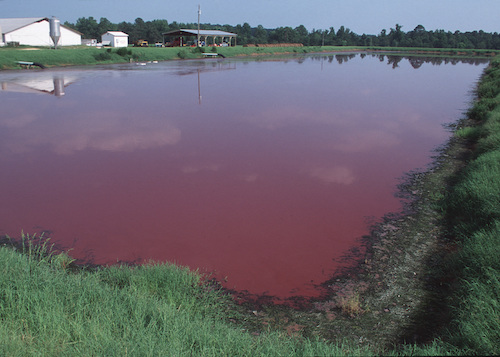
Manure lagoons, such as this one in North Carolina, hold back the sewage from concentrated animal feeding operations (CAFOs), except during heavy rains when they overflow their banks and contaminate local waterways.
Still, one must also remember that livestock are a vital part of integrated agroecological farming systems in the Global South. Generations of farmers, especially organic farmers, know the value of humanely raised livestock as part of a sound crop rotation, one that maintains permanent grasslands, sequesters carbon in the soil and feeds people locally.
Logic would dictate that, yes, farmers need to grow less corn, soy and livestock, and it must be of higher quality, and it will then bring them a higher price. Some cropland can go back to grass and native prairie, forest and growing fruits and vegetables. In the end, the Ogallala aquifer could survive and the Gulf dead zone could return to a productive fishery.
The current agricultural model places value only on volume of production, not nutritional quality of the food produced, human health, rural communities or the environment. Commodity crop production for export and ethanol production feeds only the bottom line of corporations and Wall Street investors. It pits farmer against farmer worldwide in a desperate race to the bottom and only exacerbates the economic disparity, which, when it comes down to it, is the real driver of poverty, poor health and environmental destruction. For producers and farm workers to earn a fair wage and have the means to support rural communities, everyone, no matter what they do, must also earn a fair wage and have the means to support family farmers, ranchers and fishermen by paying a fair price for food. The time for change is here.
Jim Goodman is a retired dairy farmer from Wonewoc, Wisconsin.

